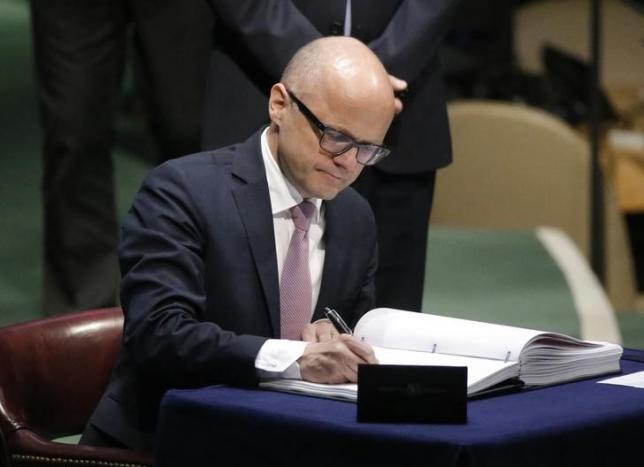Efforts to save the world’s forests hinge on securing private sector funds and ensuring indigenous communities in tropical forests are more involved in protecting their environment, Norway’s environment minister said.
Speaking ahead of a high-level conference on forest conservation hosted by Norway, Vidar Helgesen said stronger political leadership is needed to amplify the voices and role of indigenous people in forest conservation.
Norway is the biggest donor to the United Nations program aimed at Reducing Emissions from Deforestation and Forest Degradation (REDD+) in developing nations.
When forests are degraded or destroyed, the carbon stored in the trees is released into the atmosphere, with deforestation accounting for 10 to 15 percent of carbon emissions worldwide.
“A key priority of REDD+ is self-governance and strengthening the involvement of indigenous communities in the forests,” Helgesen told the Thomson Reuters Foundation in a telephone interview.
But campaigners say all too often indigenous groups are sidelined from decisions affecting the forests on which they rely for their livelihoods, and are not properly consulted about dam, mining and agriculture projects on or near their lands.
“In some countries it is still at the level of lip service,” Helgesen said.
Ensuring indigenous communities have formal land tenure or ownership is an effective way of slowing down deforestation, environmental campaigners say.
RESULTS BASED
Norway, rich from offshore oil, is financing projects to help protect forests from Ethiopia to Peru, as well as two projects worth $1 billion each for Indonesia and Brazil and one worth $750 million for Guyana.
U.S. Secretary of State John Kerry is due to speak at the two-day conference starting on Tuesday, and Helgesen said Norway and the United States would announce a bilateral agreement on forest conservation.
Developing countries participating in REDD+ get payouts for meeting verified emission reduction targets for slowing deforestation over several years.
The payments are usually distributed to farmers and local community and indigenous groups working on forest protection.
“This is results based. If we don’t see results, we don’t pay,” Helgesen said.
A key challenge to be discussed at the Oslo conference – attended by nearly 500 experts and policymakers – is the need to attract more private finance to fund forest conservation.
Funding from the private sector has contributed just one-tenth of the money provided to keep forests standing, according to 2015 figures from U.S.-based non-profit group Forest Trends.
“You can’t depend on aid budgets as they are not as abundant as they were in the past,” Helgesen said. “Private sector funding and strengthening public-private partnerships will have to be brought forward further.”
BRAZIL
Helgesen singled out Brazil, home to the world’s largest rainforest, as a success story in efforts to cut deforestation.
Brazil’s deforestation rate dropped by 70 percent during the past decade “while significantly increasing agricultural production,” he said.
“One of the most important lessons learnt is that it is not just a matter of protecting but producing too,” Helgesen said.
However the rate of forest loss has recently increased. Brazil’s rate of deforestation edged up 16 percent in the year to July 2015, according to government data.
Slowing forest clearance involves encouraging sustainable agriculture, particularly among small farmers, who need to be able to produce food and crops for sale while protecting the forest, Helgesen said.
This includes small farmers using new irrigation and fertilizer systems to produce higher yields on the same land.
“At the local level practices have been unchanged for decades and centuries and new techniques and knowledge have not been applied,” Helgesen said.
COLOMBIA
He said progress on slowing deforestation in Colombia’s vast Amazon rainforest depended on combating illegal gold and silver mining, which cuts down trees and contaminates water.
“There are strong interests including illegal actors involved in illegal mining posing a threat to local leaders and activists,” he said.
Colombia is home to more than 45 million hectares of rainforest – roughly the size of Germany and England combined.
It has declared the goal of zero net deforestation by 2020 and halting the loss of all natural forest by 2030.
Under the REDD+ program, Colombia received its first payment of $6 million this month from Norway, Britain and Germany for reducing emissions from deforestation in its Amazon rainforest in 2013 and 2014.
If Colombia meets its deforestation targets it is set to receive $300 million from the three donor nations by 2020.
Source: REUTERS











